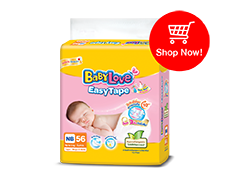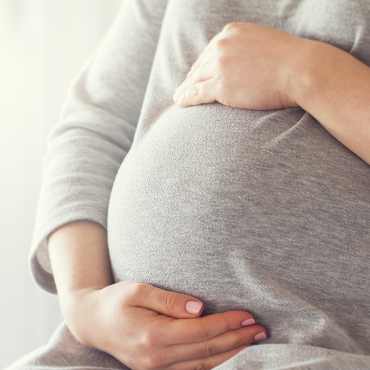The natural childbirth trend is gaining momentum, prompting many expectant mothers to consider it. However, diverse beliefs and conflicting information have left many mothers uncertain about which narrative to trust. Now, the doctor will show you what is true and what is not. We also have the article “The difference between Cesarean section and natural childbirth” that you can read for more information. If you are read, let’s find real answers for natural childbirth.
- A natural delivery not possible for the baby in a breech position
In general, this is true because nature dictates that when the fetus positions its head downward, childbirth can occur more easily. Conversely, a fetus that does not turn its head down may present with the buttocks, shoulders, or back as the leading part during delivery, making the process more difficult and often necessitating a cesarean section. Only a minority of cases involve fetuses in a breech position that still have a chance of delivering naturally. - A natural delivery not possible for placenta previa
This is also true because when the placenta is positioned low, it means that the placenta is blocking the birth canal, preventing the baby from being delivered naturally. Allowing the natural childbirth process to occur in such cases increases the risk of maternal bleeding. Therefore, if placenta previa is detected, the most appropriate delivery method is a cesarean section. - A natural delivery not possible for a big baby
It is not always true, as even though the size of the baby can affect the likelihood of a natural delivery, there are many other factors that influence the ability to give birth naturally. One significant factor is the mother's pelvic size, as even with a smaller baby, a mismatch in pelvic size may hinder a natural delivery. Additionally, mothers with diabetes during pregnancy may face an increased risk of difficult childbirth. However, it should be noted that babies with a birth weight greater than 4 kilograms have a lower likelihood of a natural delivery compared to smaller babies. Therefore, if it is determined that the baby is larger, it is advisable to consult with a healthcare provider to assess the chances of a successful natural delivery. - Natural delivery hurts a lot
It is true, but... it is something that mothers endure for the sake of their little ones. There is a common comparison that giving birth naturally is the most painful experience for human females. However, based on past experiences, there has never been a mother who could not endure natural childbirth. Most mothers often express a similar sentiment, stating, "It's the most painful, but it brings the greatest joy when you see the face of your little one.” - A natural delivery not possible for mothers with previous cesarean section
It is mostly true because cesarean section surgery creates scars on the uterus, and natural childbirth may lead to the reopening of these scars. Generally, repeat cesarean section is recommended for mothers who have undergone the procedure before. However, there are still some mothers who can give birth naturally after a cesarean section, provided certain conditions are met and under close medical supervision. - A natural delivery not possible for twin pregnancy
This is not always true because twin pregnancies that can have a natural childbirth are those where both babies are in a head-down position. In cases where twins have other positions, childbirth is often difficult and typically concludes with a cesarean section.
Nature has designed it so that the majority of mothers can give birth naturally, with a natural childbirth rate of up to 80%. Natural childbirth has at least three clear advantages:
- **Quick Recovery:** The body recovers rapidly, taking only a few hours after childbirth, with minimal discomfort;
- **Reduced Stitching Pain:** The stitching wounds are less painful compared to incisions from cesarean sections, and in some cases, there may be no stitches at all; and
- **Early Breastfeeding:** Mothers can start breastfeeding sooner, and breast milk production begins faster than with cesarean deliveries. This allows mothers to initiate care for their newborn immediately after birth. One drawback of natural childbirth is the inability to set an exact time, both for entering labor and the actual delivery. Therefore, it is impossible to schedule the birthing process to accommodate the preferences of the superstitious mother.
When a mother chooses natural childbirth, the process involves passing through the natural mechanism that opens the cervix from 0-10 centimeters, which can be divided into three stages:
- **Early Labor Stage:** This is the stage when the cervix begins to open from 0-4 centimeters. Contractions become more frequent, and some mothers may experience the release of amniotic fluid or bloody show. This stage can take a relatively long time, often several hours, starting from the onset of labor;
- **Active Labor Stage:** This stage occurs when the cervix opens from 4-10 centimeters. It is often recognized as the active phase of labor because the cervix opens rapidly, accompanied by strong contractions. This stage typically lasts around 6-8 hours; and
- **Transition Stage:** When the cervix is fully dilated at 10 centimeters, the mother begins to feel the urge to push, allowing the baby's head to move out slowly. This stage usually takes approximately half an hour to two hours.
All three stages will vary according to amounts of time depending on the mother's parity. First-time mothers in their initial pregnancies typically take the longest time, with durations gradually decreasing with subsequent pregnancies. Therefore, when the gestational age reaches term, typically from 37 weeks onwards, mothers must be prepared for childbirth. This includes closely monitoring signs entering the labor phase, planning the route to the hospital, and ensuring that necessities, equipment, and important documents are consistently ready.
In the postpartum period, mothers who have given birth naturally typically experience minimal concerns, as their bodies quickly return to normal within just a few nights. There may be some minor discomfort from the stitching wounds, which can be alleviated with paracetamol. Mothers can resume their daily activities, eat normally, and start breastfeeding their newborns. Additionally, they can learn essential baby care skills from nurses, such as bathing, dressing, diapering with tape diapers, and swaddling. These activities can commence immediately on the day of delivery without the need for a recovery period, as opposed to cesarean section births. Mothers often spend a short hospital stay of approximately 2-3 days before being able to return home. It is evident that natural childbirth has numerous benefits for both the mother and the baby, and it is not as daunting as commonly believed.
.
A heartfelt thank for information provided by Dr. Triphob ‘Tua’ Lertbannaphong
.
For all soon-to-be moms, don't forget to pack the essentials for your little one's delicate skin when you're nearing childbirth! Introducing BabyLove Diapers Easy Tape with Triple Lock technology(2) that safeguards against leaks from all sides and provides up to 10 hours of lasting dryness(1). Importantly, our products have been dermatologically tested on hypoallergy(3), ensuring your newborn's comfort without any risk of allergies. No matter how new you are to motherhood, rest assured when your baby is wrapped in BabyLove, allergic worries are far away!
Enjoy shopping high-quality value-for-money diapers with a lot of discounts and freebies at BabyLove Online Shop by clicking here
(1) The absorbancy duration depends on the individual baby's urine amount, comparing exclusively within the BabyLove product line.
(2) Absorbent pads, raised leg cuffs, and elastic bands around the body for leak prevention
(3) The product does not cause allergies or irritation in the test group, based on test results conducted by Dermscan Asia in Thailand, excluding individual sensitivities. This does not include reactions caused by prolonged use of diapers. If there are individual allergic reactions or irritations, it is advisable to consult a doctor.
Crated At 25/12/2023


















